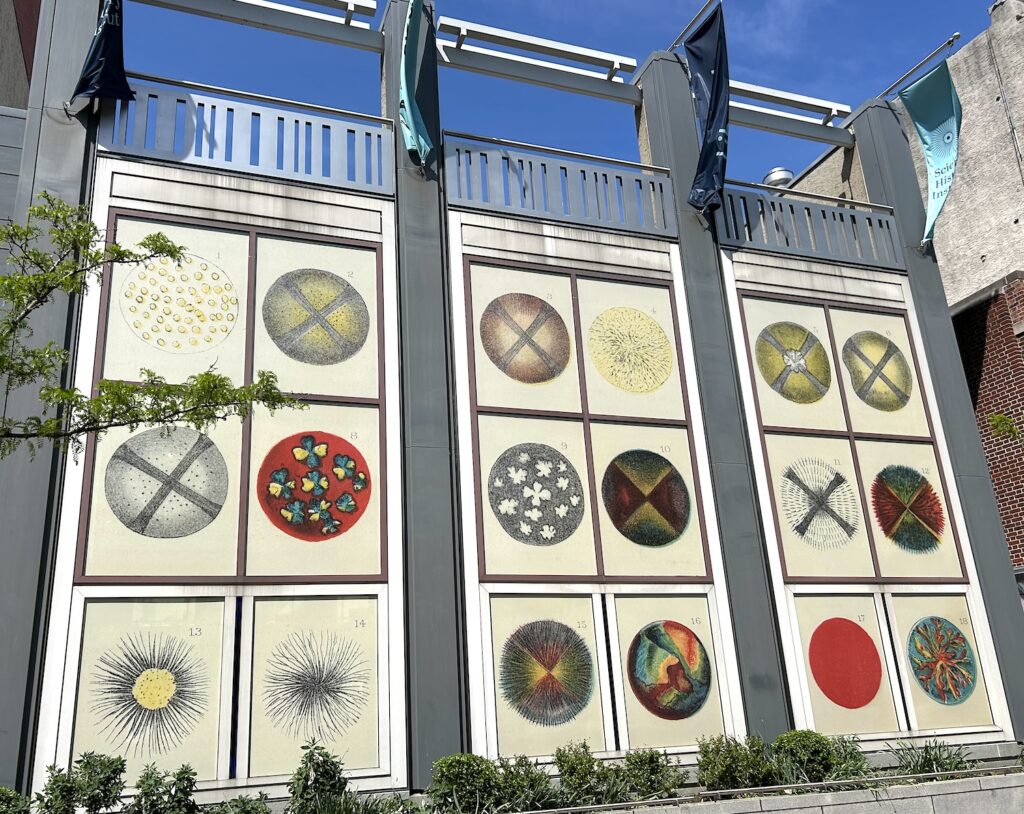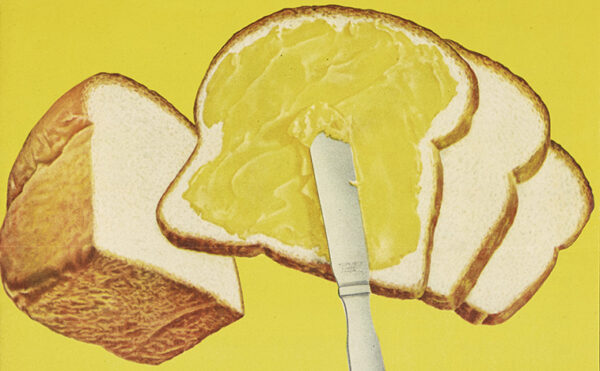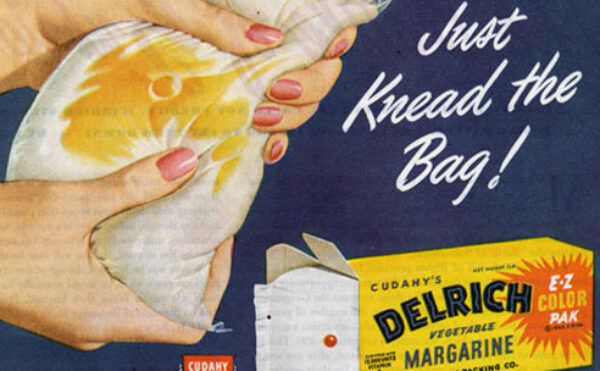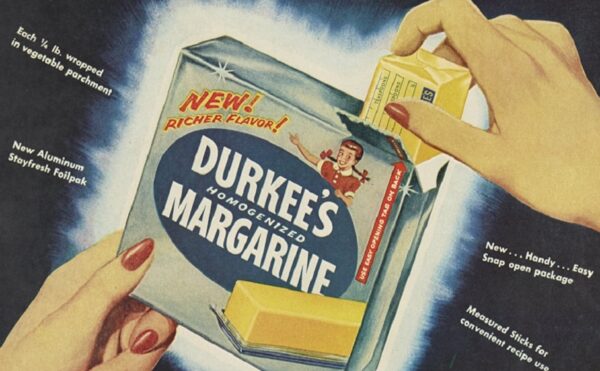Fats, Butter, Beef, and Lard
This outdoor exhibition explores the battle between butter and oleomargarine in the late 19th century.
Building Façade
Do these images look like butter to you? Or beef? If you were a scientist working in 1885, they might!
In 1885 USDA microscopist Thomas Taylor published these 18 illustrations of fat crystals in the Proceedings of the American Society of Microscopists. Taylor’s article used the images to illustrate his methods for identifying fats under a microscope. His research was grounded in widespread concern that imitation butters were being sold as the real thing.

Oleomargarine was a butter-like substitute developed in 1869 by French chemist Hippolyte Mège-Mouriès. Made from beef fat, potassium salts, and sheep’s stomach, it was naturally a gray color, so manufacturers colored it yellow to more closely resemble butter. It emerged during a period of growing concern over food adulteration. Dairy farmers were especially worried about oleomargarine’s impact on the sales of butter.
Taylor’s work, then, addressed both public and private concerns. In his 1885 article, he celebrated his work on behalf of these groups. “As a consequence of my success in detecting these fraudulent compounds,” he wrote, “about sixty hawkers, men and women, who, under the guise of farmers, have been offering for sale from door to door in this city, compounds of tallow, lard and cotton-seed oil, mixed with inferior butter, as genuine creamy butter, have abandoned their calling, to the great benefit of the dairy interests of this section of the country.”
But not everyone was convinced. Fellow scientists critiqued Taylor’s research and conclusions. They criticized his method for producing samples. They argued he didn’t account for environmental conditions. And they suggested that microscopic examinations of fat crystals differed according to whether a sample came from the outer or inner portion of a package of butter or oleomargarine.
These scientific debates paralleled political debates over imitation and substitute butters. In 1886 President Grover Cleveland signed the Oleomargarine Act, taxing the cheaper-than-butter competition at two cents per pound. And by 1898, 32 of 45 states had passed laws restricting the practice of coloring oleomargarine to mimic butter.
From the laboratory to the halls of Congress, battles over butter shine a light on the growing entanglement of science, politics, food, and economic interests of the late 19th century. They represent negotiations that are still with us today.
Curator: Jesse Smith
Installation and digitization: Jahna Auerbach and Scott Bowe
Featured image: Detail of Crystals of Fats, Butter, Beef & Lard, 18 illustrations of various fats under a microscope, from an 1886 reprint of USDA microscopist Thomas Taylor’s 1885 article.
Support for Fats, Butter, Beef, and Lard is provided by The Pew Center for Arts & Heritage as part of the Science History Institute’s latest exhibition, Lunchtime: The History of Science on the School Food Tray.
You might also like

DISTILLATIONS PODCAST
Butter vs. Margarine
One of America’s most bizarre food battles.

DISTILLATIONS MAGAZINE
Butter-in-Law
Pity butter’s poor relative, margarine, which has shifted from outlaw to savior to villain in the space of 100 years.

COLLECTIONS BLOG
Stomping the Margarine
Life when we had to color our food.
